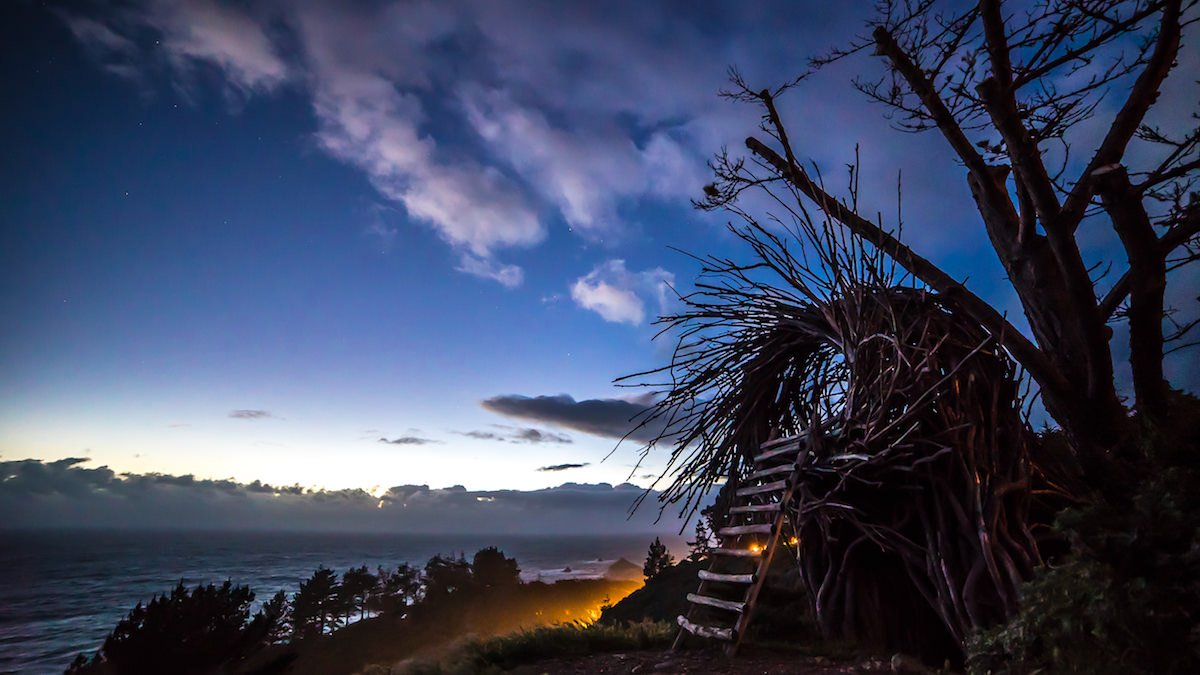Spotlight on Glamping Structures - Treehouses
HUMANS HAVE BEEN CLIMBING TREES FOR TWO MILLION YEARS. RECENTLY, WE HAVE BEGAN LIVING IN THEM. WE’LL HIGHLIGHT SOME OF THE MORE FAMOUS TREEHOUSES IN HISTORY, AND INTRODUCE SOME GLAMPTUARYS AROUND THE WORLD THAT HAVE EMBRACED THIS GLAMPING STRUCTURE IN THE SKY.
Location - Nid’ en’ Ô - Lamothe-Fénelon, France
My first “fort” as a child was situated high atop a tree in our backyard. It consisted of a couple boards that we lodged between some branches so we had a place to sit. There were grand plans discussed that included walls, a ceiling, and maybe a window. Unfortunately, we never moved beyond our seating area. The fort was promptly dismantled after I fell out of the fort and my father found me hanging upside down with my foot caught between two branches. This was one of many “close calls” my parents and I experienced throughout my childhood due to my adventurous spirit. My childlike curiosity is still strong today and someday, I hope to take another run at building that treehouse fort. Until then, I’ll happily visit one of the many Glamptuarys that feature the treehouse as a glamping accommodation. And I’ll hopefully avoid another nose dive while I’m at it.
When was the first treehouse built? The first recorded treehouse was owned by Roman Emperor Caligula back in roughly 35 AD.
Caligula - Source - Italy Rome Tour
He referred to it as his “nest” and used his unique space for small banquets when he fancied a heightened dining experience. Caligula was most remembered for many “bad things,” but we’ll take the treehouse as a good thing and leave it at that.
It should be noted that humans utilized trees for their dining experiences well before Caligula did - and in a much different way.
Two million years ago, the first hunter-gatherers would climb trees to harvest fruits and honey. Over time, they became aware of the supreme sight lines trees could offer and when spears became a common weapon, trees provided hunting perches for large game. Humans would sit and wait for animals to pass underneath the tree and when the time was right, they would jump and strike their prey. This technique is still used today…with some improvements in weaponry and perches.
Nowadays, treehouses are used for dwelling purposes more so than hunting perches and dining halls.
The Korowai People of Indonesia live amongst the trees for nourishment, and also to avoid floods and enemy attacks.
Korowai Treehouse - Source - Wikipedia
There is also a small tree village in Claut, Italy called the Cavanese Village where people have chosen to “take to the trees” - permanently.
Pictured above - courtesy of ECOBNB, the small group has constructed multiple apartment sized dwellings along with communal spaces which are used for dining and social gatherings. They have also hopped on the glamping bandwagon and are currently offering a few of their treehouses as short term rentals. The cost? Labor. You can stay as long as you are a willing participant as a communal dweller.
Most properties around the globe where treehouses exist are designed for use as a pleasure dwelling, and in our case - a glamping structure.
The oldest treehouse, still in operation today as a glamping structure, is located at Pitchford Hall in Shropshire, England.
Originally designed back in 1692 for Queen Victoria as a playhouse, this is now part of a larger glamping rental on the estate grounds.
The treehouse design has stood the test of time and with the emergence of glamping, there has been a resurgence in this architectural phenomenon. There have even been television shows which highlight the designers and builders who have (get ready for it) taken treehouses to a whole new level.
Treehouse Masters is a great show to watch and Pete Nelson’s designs are amazing. His designs can be found all over the world and some can be found at Glamptuarys.
Whether it’s a Pete Nelson design, or the craftsmanship of someone else, we’ve placed the Glamptuarys below on our bucket list as treehouse stays:
Location - The Mohicans - Glenmont, OH
Location - Tarangire Treetops - Tarangire, Tanzania
Location - Winvian Farm - Morris, CT
Location - Dominican Tree House Village - El Valle, Dominican Republic
Location - Treebones - Big Sur, CA
Location - Lions Sands Treehouses - Mpumalanga, South Africa
According to a recent study, treehouse glamping is projected to bring in $563.6 Million dollars by 2029 with a 10.5% CAGR. I imagine this means our bucket list will realize some growth also…
As you continue to explore glamping options, make sure you keep your eyes pealed (and your gaze up) for treehouses.
And please, don’t fall out of one like I did.
Safe Travels Everyone!
I truly appreciate your time and if you’ve enjoyed what you’ve read - please share with your network.






























